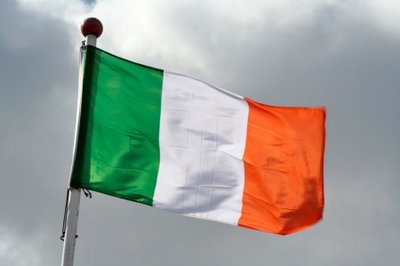Iran will soon be open for business, following the agreement reached on July 14 with the EU, US, China and Russia over its nuclear program.
The lifting of economic and financial sanctions offers significant opportunities for market-oriented Irish exporters and investors across a wide spectrum to supply the needs of the demand from 77 million young, tech-savvy consumers, wrote the Irish Examiner.
Ireland’s exports to Iran last year were fairly minimal at €46 million. The lifting of sanctions should see this rise at least ten-fold, based on the levels of Ireland’s exports to Saudi Arabia which reached €761 million last year.
IT and telecommunications companies should be among the early winners in entering the market, but sanctions need to be lifted first.
Ireland’s state agencies need to be alive to the opportunities, as risks will be substantial and government support may be essential to assist the early movers and give them a level playing field with the UK, US, German, Italian and French businesses who will be able to avail of their state-supported export guarantees.
Today, Iran’s economy is far below its potential and on exiting the embargoed regime is likely to be the fastest growing of the emerging economies as it fills the gap originating from decades of sanctions.
Iran’s annual output was $415 billion in GDP terms in 2014. This compares with Saudi’s GDP last year of $746 billion based on a population one third the size.
Iran boasts the largest human capital and consumer market base in the whole of the Middle East and Central Asia. Combined with its vast endowment of natural resources—the country holds the world’s fourth-largest proven crude oil reserves and the world’s largest natural gas reserves, according to BP’s 2015 Statistical Review of World Energy—Iran should be enjoying enormous economic success in future.
Ireland’s exporters will need to plan sizable upfront investment in developing the market, but the returns should be high for decades to come from this major market in the making.
There is a bonanza of up to $150 billion in frozen assets, which will have to be released back to Iran under the deal on sanctions removal.
The Iranian government is in the process of introducing new oil and gas contracts to replace the old, unappealing buyback schemes, which basically required oil firms to take care of the initial development phase, and then wait to be refunded.
The new contract will allow an oil firm to engage with different phases of field development—exploration, development, production—and share the revenues generated by the sale of oil, according to the contract’s first draft, which recalls a standard production sharing agreement.
This is all good news for the global economy, as the added capacity coming on stream from Iran will keep the price of the barrel of oil down, which is good news for every non-oil producing country, including Ireland.
A deal with the West will also give Iran the chance to join the international business community from which it has essentially been banned for decades.
Currently, Iran is the only midsized to big economy that is not part of World Trade Organization.
An early approach by WTO to open membership discussions would act as another signaling factor to potential investors that it is a safe zone for them to invest, and make it easier for Irish exporters to sell to the market under the rules-based system of WTO.
Another important step that Iran might take is to sign and ratify the Convention on the Settlement of Investment Disputes Between States and Nationals of Other States.
This opens the door for investment disputes from FDI in Iran to be adjudicated at the International Center for Settlement of Investment Disputes.


